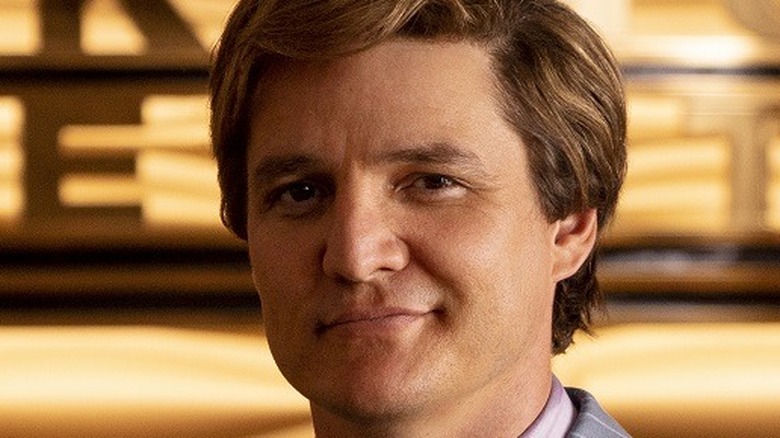
Co-created by writers Keith Giffen and J.M. DeMatteis and artist Kevin Maguire, Maxwell "Max" Lord IV made his debut in "Justice League" #1 in May of 1987 as a businessman whose behind-the-scenes backing helped make the Justice League International team possible. Later, he was revealed to have either manipulated, or been manipulated by, various villains and artificial intelligences, until DC Comics decided that, nope, he'd just been a bad guy all along.
As the heir to a corporate empire with an affinity for the slightly sleazy get-rich-quick schemes of used car salesman Larry Dallas on "Three's Company," Max was created as a comic relief character for a team that was already full of the same; his birthday was even established as April 1, 1951, aka April Fool's Day, in "Justice League" #4. But since then, Max has become best-known for shooting the second Blue Beetle, Ted Kord, in the "Countdown to Infinite Crisis" one-shot (sorry) before Wonder Woman snapped his neck in "Wonder Woman" #219. "The Mandalorian" star Pedro Pascal played him in "Wonder Woman 1984," which premiered in 2020.
Look, we can't promise to make Max Lord's fictional biography coherent, but we can at least highlight some of his more interesting moments along the way.
Retcons From The First
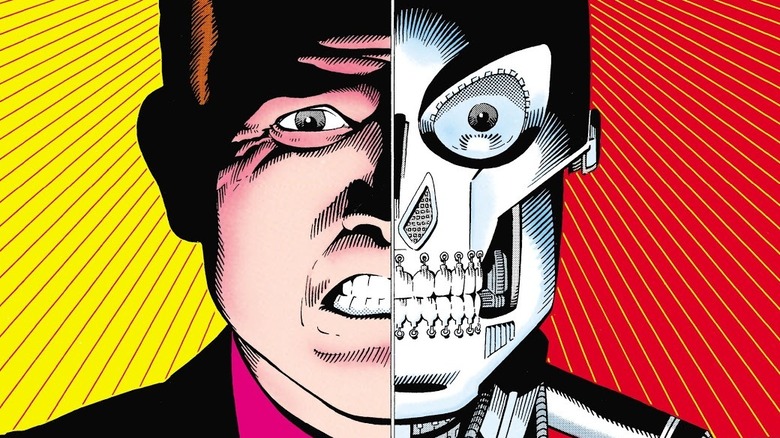
For a character whom DC Comics has since sought to cast as an out-and-out villain, a surprising aspect of Max Lord's original origin (not a redundant term in superhero comics) that remains in canon is that, when his father discovered his company had released carcinogenic products, he committed suicide out of guilt. That inspired his son, our Max, to do better.
Max initially worked to re-constitute the then-broken Justice League while being controlled by a villainous computer in order to establish a peacekeeping organization that could be used to dominate the world. Subsequent stories retroactively replaced the computer with an artificial intelligence from outer space named Kilg%re (pronounced "Kilgore"), who fought the Flash before Max discovered it in a cave.
Kilg%re's role was minimized by "Justice League: Generation Lost" #20, which revealed that Max had already made his own villainous plans before Kilg%re took control of him.
Human? Metahuman? Cyborg?
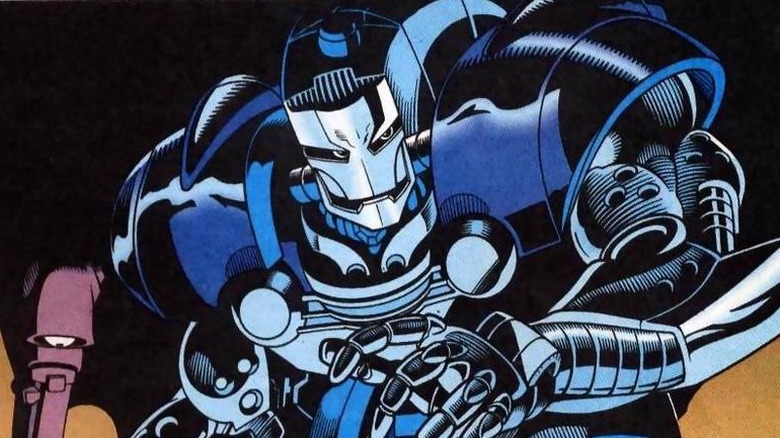
While Max Lord began as an ordinary human, the "Invasion" crossover, which was plotted by Keith Giffen, detonated a "Gene Bomb" that awakened the latent "metagene" in a small number of previously non-superpowered humans, giving Max the ability to sense and control the minds of others.
An assassination attempt on Max kicked off the 15-issue "Breakdowns" crossover between the "Justice League America" and "Justice League Europe" titles, and allowed the supervillain Dreamslayer to possess Max's comatose body, and with it, his mental powers. Although Dreamslayer amplified Max's powers to control thousands of minds at once, those powers appeared "burnt out" after Max was freed. That didn't stop them from aggravating a brain tumor that led to Max's first death (again, comics), at which point Kilg%re downloaded Max's consciousness into a cyborg duplicate of the supervillain Lord Havok (later retconned into a piece of "New God" technology, because again, comics), which came to resemble Max's original human form over time.
And then, since DC Comics was already using its line-wide "Infinite Crisis" crossover to rewrite the history of its universe anyway, they literally said to themselves, "Forget this," and established Max Lord as entirely human again without any explanation.
A Last-Minute Archvillain
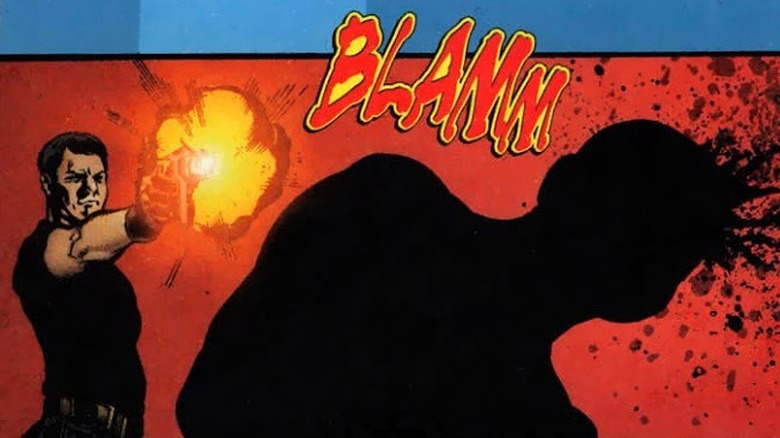
Lest you dismiss this as mere supposition, take it from Dan DiDio, then-vice president and executive editor of DC Comics. When asked about Max Lord being a cyborg, DiDio recalled how DC editors discussed which character could lead "an offshoot of Checkmate," the same covert operations agency with which Peacemaker was associated. According to DiDio, candidates included former Charlton Comics detective, spy and "Action Hero" Sarge Steel, who debuted in 1964, and DC's own secret agent King Faraday, who debuted in 1950.
Max Lord was considered -- and almost got the job -- but was tabled when his cyborg status was pointed out. The focus shifted to "Mr." Loren Jupiter, financial backer for the original Teen Titans, who debuted in "Teen Titans" #25. But DC's editors felt "Mr. Jupiter" sounded "old fashioned." DiDio felt his revised handle of "Mr. J" had "overtones of the Joker" and "sounded stupid." So, they reconsidered Max Lord.
As for his cyborg status? Quoth DiDio: "We thought about that aspect of the story some more and then asked, 'Did anyone read it?' No. 'Did anyone like the idea?' No. So we moved ahead with Max as being a human, and having been a human, and not letting that small part of the past stand in the way of this story."
Omens Of Future Villainy
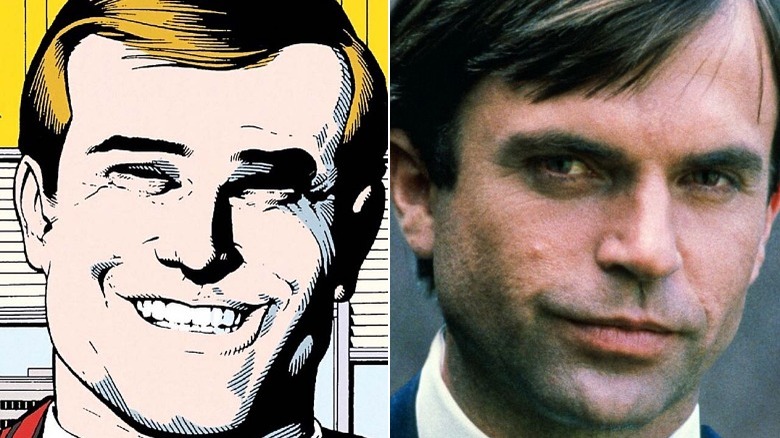
Max Lord may well have been introduced as a manipulative scumbag, but within a few issues of his debut, he was revealed to be under the influence of an evil AI, which he defeated at the near cost of his own life, and sought to redeem himself to the Justice League thereafter. Under his co-creators Giffen, DeMatteis and Maguire, Max Lord was an opportunistic con artist who tried to make money off the heroes he'd helped bring together, but he still saw them as his friends, and aided them in doing good.
And yet, even Maguire admitted that his artwork portended something more ominous, as revealed in "Modern Masters Volume 10: Kevin Maguire." Maguire originally considered Giffen's suggestion of Christopher Walken as Max Lord, and briefly used Timothy Dalton as his model, before settling on future "Jurassic Park" star Sam Neill -- Dalton's fellow contender for James Bond -- as Max's visual inspiration. Neill won out because of his role as Damien Thorn, a.k.a. the Antichrist, in 1981's "Omen III: The Final Conflict," since in Maguire's own words, "Maxwell Lord was supposed to be this sort of sinister guy."
A Forgotten Friendship
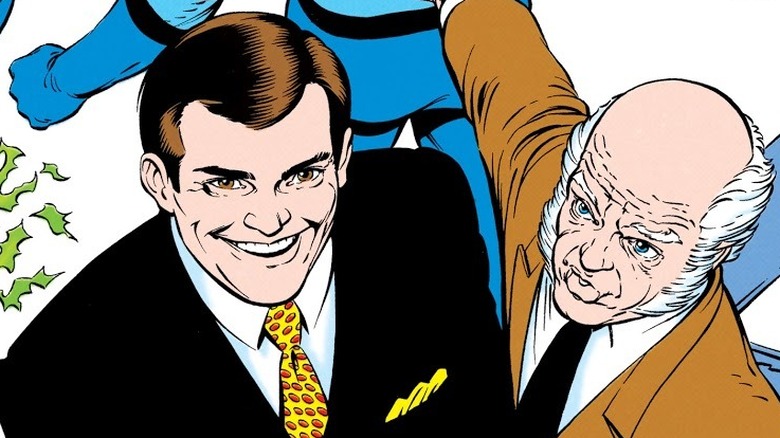
Oberon, named after the faerie king of medieval and Renaissance literature, was a former circus dwarf who became the stage manager of another New God, Scott Free, better known as Mister Miracle, the world's greatest escape artist. When Mister Miracle became a member of the Justice League in the first issue of Giffen, DeMatteis and Maguire's run, Oberon was standing right beside him; he's in the first panel of interior art in which Scott Free appears, and with Scott on the cover.
Perhaps because Max Lord and Oberon were both in the business of showcasing their respective superheroes, Oberon became Max's de facto right-hand man in the Justice League. This mutual professional respect and understanding only deepened after Mister Miracle was secretly replaced on Earth by a lifelike robot doppelganger in "Justice League International Special" #1, which was then "killed" by the supervillain Despero in "Justice League America" #39. Neither Oberon nor Scott Free's wife, Big Barda, knew the robot wasn't really him, so they held a funeral for it in "Justice League America" #40.
Even after the real Scott Free returned, Oberon and Max retained the bond they'd gained, to the point that Oberon was the only member of Max's team to remain after everyone else had left, including Scott and Barda.
Unsettling In Retrospect
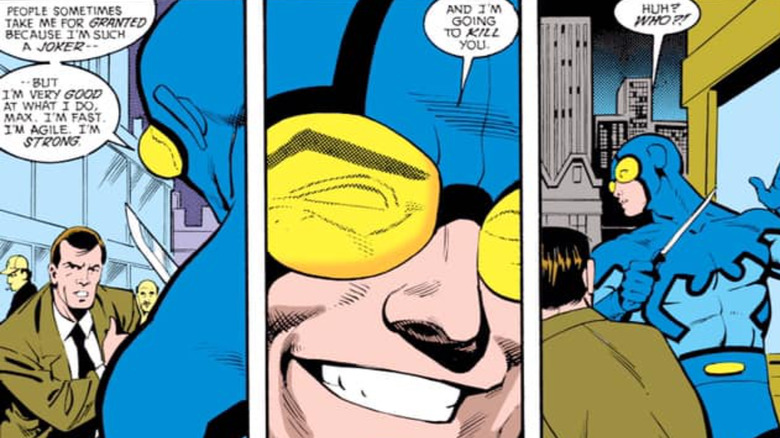
Since Max Lord's reveal as a villain was not intended during his earlier stories, some of those moments now read as darker than they did before. Although Max went on to shoot Ted Kord for refusing to join his covert campaign against all "metahumans" — like Bruce Wayne, Ted is a superhero but doesn't have any actual superpowers — Ted targeted Max in a seemingly random homicidal spree in "Justice League America" #26 in May of 1989.
In the Justice League's Manhattan embassy building, a cranky Oberon blew up at Ted for falling asleep on monitor duty; shortly afterward, Ted went to the kitchen, grabbed a large steak knife, stabbed Oberon in the chest, and raced outside. Guy Gardner, who was the team's Green Lantern at the time, discovered Ted chasing Max through the streets of New York, intent on killing him. Not even Max's ability to "push" people's minds had any effect on Ted, although he received a timely rescue from the Huntress and Batman, who temporarily disabled Ted with an accidental arrow to the leg and delivered the knockout blow, respectively.
Oberon and Max survived their stab wounds, Max lost his room at the embassy so the team could have space to confine Ted, and Suicide Squad boss Amanda Waller determined that Ted was mentally programmed by the supervillain Queen Bee in "Justice League America" #27.
Not Exactly A Seamless Transition From Good To Bad

Even after Max Lord was mind-controlled, possessed, and downloaded into a robot copy of a supervillain, the "Justice Riders" one-shot of 1997, published under DC Comics' "Elseworlds" imprint (think Marvel's "What If...?"), was an anomaly for portraying him as unambiguously evil.
In this Wild West steampunk reimagining, Sheriff Diana Prince (Wonder Woman) leads a superpowered posse against railroad baron Maxwell Lord, who operates a steam locomotive robot suit as "Lord Havoc." And yet, fans were still shocked when Max stood revealed as "The Black King" of Checkmate in "Countdown to Infinite Crisis" in May of 2005.
Max's unplanned heel turn wasn't particularly well-executed on the back end, in terms of the consistency of its or Max's character development. Giffen, DeMatteis and Maguire's sequel to their "Formerly Known as the Justice League" miniseries, which ran for six issues from September of 2003 through February of 2004, was finally published as "I Can't Believe It's Not the Justice League" in "JLA Classified" #4-9, which ran from April through August of 2005. So, to review, the same spring and summer months that saw Max and Ted trading sitcom quips and "BWA-HA-HA" laughs as "Super Buddies" also showed Max executing Ted in cold blood.
Incidentally, Max flummoxed Diana in another alternate reality, as the modern human guise for Ares, the Olympian god of war, in the graphic novel "Wonder Woman: Earth One" #3, in May of 2021.
The Black King Becomes A Black Lantern
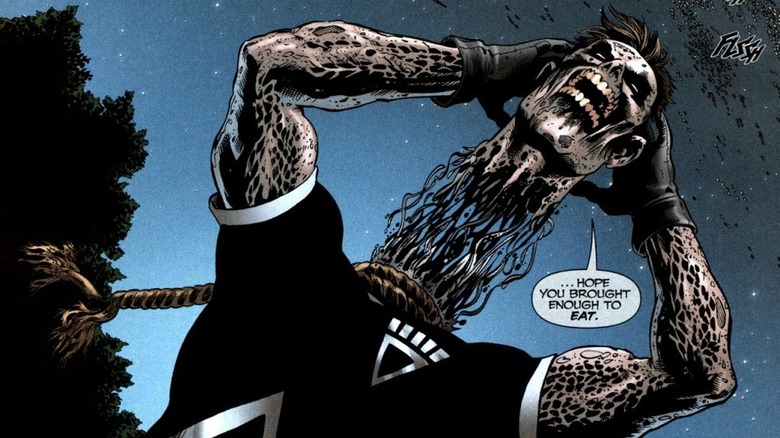
When Diana twisted Max Lord's head around in "Wonder Woman" #219, she'd exhausted her other options. Max had used his powers to "push" Superman to attack Batman and Wonder Woman. Diana bound Max in her Lasso of Truth and demanded that he tell her how she could free Superman from his control. Max simply said, "Kill me."
Nonetheless, because Brother Eye, an all-seeing artificial intelligence (yes, another AI -- again, comics) recorded Diana killing Max and broadcast it to the world, Max achieved the posthumous victories of making himself a martyr for the anti-metahuman cause, tarnishing Wonder Woman's reputation, and forcing Superman and Batman to distance themselves from her.
Max Lord's corpse racked up its own set of adventures, having its skull stolen for a spell by Arthurian sorceress Morgaine le Fey, before Max was resurrected as an undead Black Lantern by Nekron, an embodiment of death, during the "Blackest Night" crossover. Max -- or, at least, his corpse -- bore Diana enough of a grudge to lure her to Arlington National Cemetery with a trail of murdered bodies. After she shattered his body into pieces, he continued to taunt her.
Max was fully resurrected by the power source for the White Lantern Corps -- an entity that embodies life -- then fled to parts unknown in "Blackest Night" #8 in May of 2010.
Wiping The Slate Clean
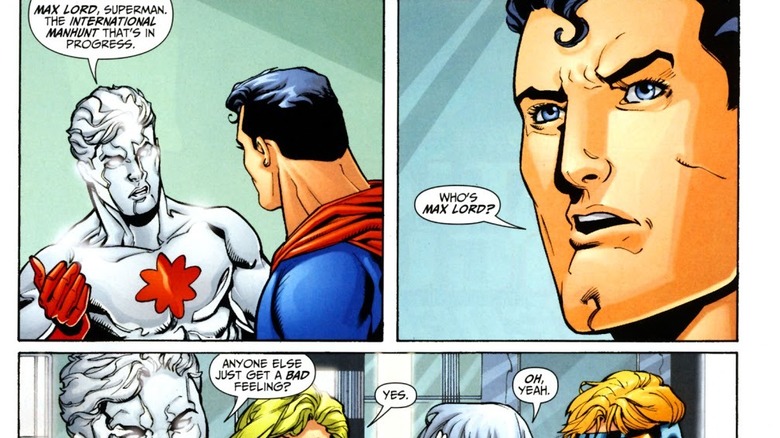
Although Max Lord evaded his former Justice League colleague Guy Gardner with a mental "push" before he fled, he was soon the subject of a worldwide manhunt by both current and former Justice League members, as well as every other superhero and law enforcement agency on the planet.
Marvel Comics' "One More Day" crossover, in which Peter Parker struck a deal with the devil to make the public forget his secret identity, arguably set a precedent for "Justice League: Generation Lost" #1, which was published in July of 2010. In the story, Max amplified his powers enough to erase the memory of his existence from everyone on Earth, with the exceptions of his former Justice League colleagues Booster Gold, Fire, Ice, and Captain Atom.
As Max commenced a campaign of character assassination against the Justice Leaguers who still remembered him, the ghostly superhero Deadman was established as also remembering Max in "Brightest Day" #8, while Batman appeared to be aware of Max's resurrection after briefly receiving a White Lantern Power Ring in "Brightest Day" #14.
Max kept grinding his favorite axes by shooting Ted Kord's successor as Blue Beetle, teenager Jaime Reyes, in the head in "Justice League: Generation Lost" #19, before again enhancing his mental powers, this time forcing people around the world to attack Wonder Woman and the Justice League International in "Justice League: Generation Lost" #22.
Showdown With The Suicide Squad
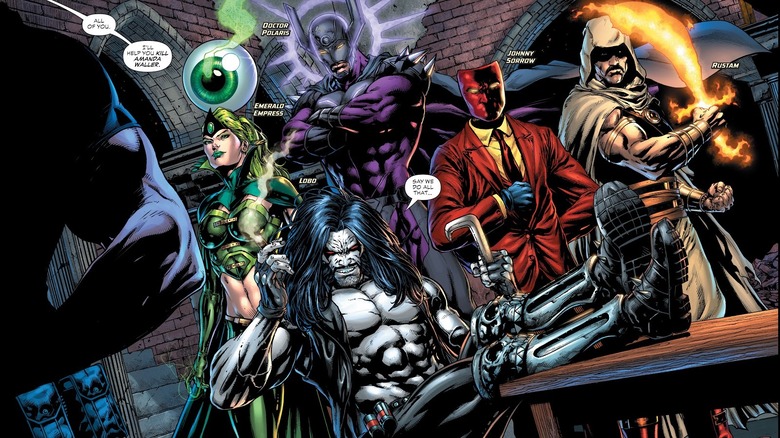
Jaime Reyes recovered from being shot, and Captain Atom forced Max Lord to undo his global mindwipe, after which Max escaped again. He posted a video online blaming others for the fallout from what he'd done, and plead his case while in hiding, claiming his only motivation was to protect the world from the supposed threat of metahumans. None of this ultimately mattered, because at DC Comics the time is always retcon o'clock, and in November 2011, DC relaunched its entire line of titles and rebooted its universe.
In "The New 52," Max Lord ran Checkmate as its Black King and acquired Project Cadmus, the genetic engineering and scientific research center located just outside of Superman's Metropolis. After DC relaunched its entire line again and rebooted "The New 52" reboot with "DCU: Rebirth" in July 2016, Max apparently felt he'd gone too long without making any catastrophically terrible decisions and started a war with Amanda Waller in "Justice League vs. Suicide Squad," which ran six issues from February through March of 2017.
In that story, Max assembled a Suicide Squad consisting of supervillains Doctor Polaris, the Emerald Empress, Johnny Sorrow, Lobo, and Rustam to steal a black diamond known as the Heart of Darkness so that Max could possess the powers of the body-hopping demon Eclipso, who was trapped within.
A More Shortsighted Lex Luthor
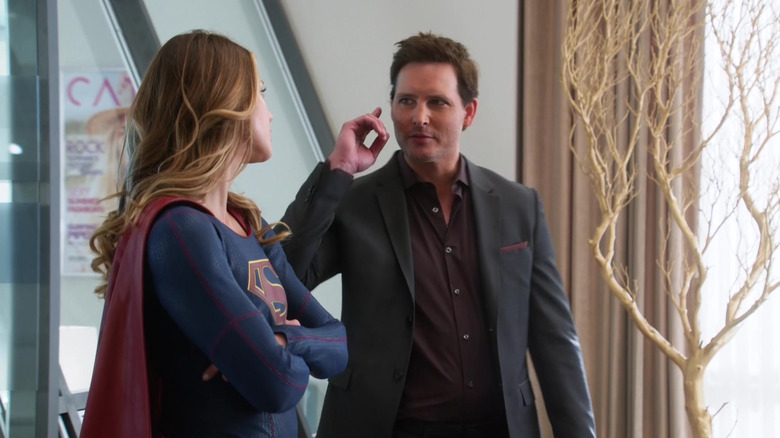
An Eclipso-empowered Max Lord managed to take over the United States and occupy the White House, but the problem with possessing the powers of an ancient body-hopping demon is that it will inevitably overpower and possess you in turn. After the Justice League and Amanda Waller's Suicide Squad saved the world from Eclipso, Max woke up in a cell and realized he'd been manipulated by Waller into bringing about a threat that could justify the Squad's existence to the League, as Waller invited him to join her new "Task Force XI."
In fact, for a self-styled master manipulator, Max tends to get played like a punk, especially by Waller, and often outsmarts himself with his schemes. The latter trait prevails in other media portrayals of Max, too, starting with the "Justice League Unlimited" animated series episode "Ultimatum," in which Max was voiced by Tim Matheson. There, he manages the "Ultimen" superhero team, before being forced to admit they are clones created by Project Cadmus.
Gil Bellows played Max Lord as the Black King of Checkmate, who reported to a "Red Queen" (secretly Clark's mom, Martha Kent), in two episodes of the "Smallville" live-action series. He failed his mission both times. Peter Facinelli's Max Lord, who appeared in 14 episodes of the 1st season of the "Supergirl" live-action series, made the subtext of his character's surname into explicit text, as both J'onn J'onzz and Alex Danvers ascribed a "god complex" to him.
An '80s Artifact
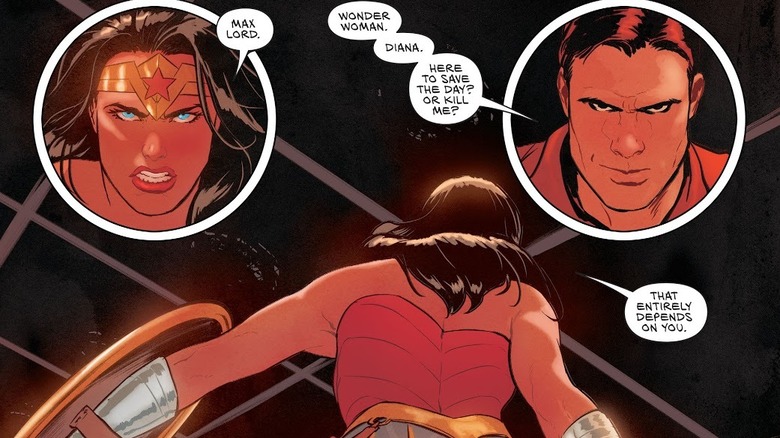
Random House published Donald Trump and Tony Schwartz's "Trump: The Art of the Deal" in November of 1987. My only political point is, there was arguably never a better time to appeal to audiences as a ruthlessly profiteering tycoon with inherited wealth than in 1987, the same year Max Lord made his debut.
Mariko Tamaki's run as writer of "Wonder Woman" #759-769, which ran from September of 2020 through February of 2021, cast Max Lord as Diana's ever-present antagonist, and Tamaki made her position on Max clear: When Diana sought to save Max's estranged daughter, Emma Deropalis, from following the same path to psychic supervillainy as her father, she did so by telling Emma that she possesses more humanity than Max ever did. Tamaki depicted Max as the ultimate example of a rich, greedy corporate raider preying upon humanity, and that's likely the role he's stuck in from now on.
Read this next: 'The Suicide Squad' Actor Flula Borg On Playing A Supervillain Sex God For James Gunn [Interview]
The post Things you didn't know about DC's Maxwell Lord appeared first on /Film.
from /Film https://ift.tt/2UUjjkL
via IFTTT
Comments
Post a Comment